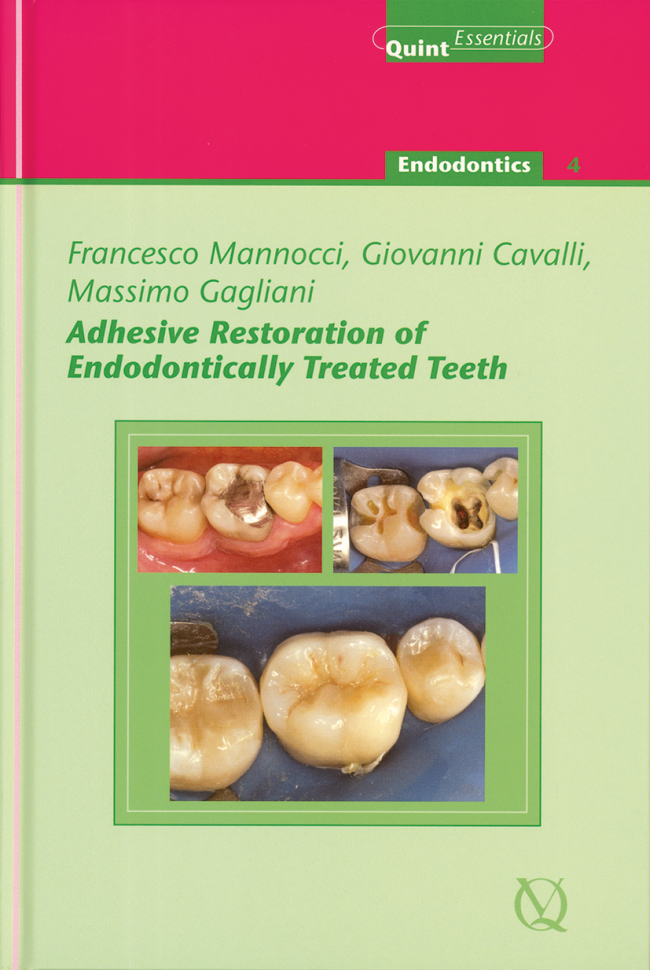International Journal of Computerized Dentistry, 4/2017
PubMed-ID: 29292412Seiten: 377-392, Sprache: Englisch, DeutschAl-Nuaimi, Nassr / Patel, Shanon / Foschi, Federico / Mannocci, Francesco / Austin, Rupert S.Ziel: Das Ziel bestand in der Untersuchung der In-vitro-Genauigkeit digitaler Abformung für die dreidimensionale Volumenbestimmung der koronalen Restsubstanz nach endodontischer Kavitätenpräparation mittels Mikro-Computertomografie (μCT).
Methoden: Die Quantifizierung der Richtigkeit und Präzision des intraoralen Digitalscanners (3M™ True Definition Scanner) wurde mit einem Endmaß und einem profilometrischen Eichmodell durchgeführt. 34 extrahierte menschliche Molaren mit endodontischen Zugangskavitäten wurden mit einem intraoralen Scanner (Test-Scanner) im hochauflösenden Modus sowie mittels μCT (Referenz-Scanner: DE Locus SP μCT) im hoch- (HiRes-μCT) und niedrigauflösenden Modus (LoRes-μCT) gescannt. Anschließend wurden mit einer Messsoftware die volumetrische Genauigkeit und die 3-D-profilometrischen Abweichungen analysiert. Um die Scanmethoden bezüglich der Unterschiede bei den Volumenmessungen zu vergleichen, wurde eine einfaktorielle Varianzanalyse für wiederholte Messungen in Kombination mit dem Bonferroni-Post-hoc-Test verwendet.
Ergebnis: Der digitale Scan führte zur Messung von 1,36 % bzw. 0,68 % geringeren Volumina als das HiRes- bzw. LoRes-μCT. Der Unterschied zwischen den Volumenmessungen mithilfe des Intraoralscanners bzw. des HiRes- und LoRes-μCT war statistisch signifikant (p 0,001). Die Analyse der mittleren 3-D-profilometrischen Abweichungen ergab für den Intraoralscanner größere Oberflächenabweichungen (± 27/33 μm) als für das HiRes- und LoRes-μCT (± 16/32 μm).
Schlussfolgerungen: Obwohl die Volumenmessungen von Zähnen mit endodontischer Zugangskavität gegenüber der μCT-Messung um bis zu 1,36 % geringer ausfielen, war der digitale Scanner in der Lage, die Kronenaußen- und -innenflächen von Zähnen nach Präparation einer endodontischen Zugangskavität zuverlässig zu messen.
Klinische Bedeutung: Das intraorale digitale Scannen ist eine nicht-ionisierende Methode zur präzisen Messung der Menge gesunder koronaler Restsubstanz. Das intraorale Scannen der Kronenaußen- und -innenflächen von Zähnen mit endodontischer Zugangskavität kann sich zu einem zuverlässigen Verfahren für die Bestimmung der koronalen Restsubstanz nach endodontischer Behandlung entwickeln. Diese kann bei der klinischen Entscheidungsfindung helfen, da eine genauere Bestimmung der Qualität und Quantität der Kronenrestsubstanz zu einer besseren Behandlungsplanung und Prognosestellung vor der endodontischen und restaurativen Behandlung führt.
Schlagwörter: Intraoralscanner, Mikro-Computertomografie, endodontische Zugangskavität, koronale Rest-Substanz, Volumetrie, Metrologie
Quintessence International, 1/2017
DOI: 10.3290/j.qi.a37131, PubMed-ID: 27834417Seiten: 69-82, Sprache: EnglischCorbella, Stefano / Taschieri, Silvio / Mannocci, Francesco / Rosen, Eyal / Tsesis, Igor / Del Fabbro, MassimoObjective: The objective of the present systematic review was to evaluate, in patients with irreversible pulpitis affecting mandibular posterior teeth, if premedication with nonsteroidal anti-inflammatory drugs can increase the efficacy of inferior alveolar nerve block (IANB) if compared to placebo administration; if one anesthetic agent is more effective than another; if 1.8 mL injection is more effective than 3.6 mL injection to increase the efficacy of IANB; and if supplementary buccal injection is able to increase the efficacy of IANB as compared to a negative control/placebo group.
Data Sources: Randomized controlled clinical trials investigating different aspects (technique, premedication with anti-inflammatory drugs, different anesthetic agents) were searched. Success of IANB, as defined in the studies, was considered as the primary outcome. A meta-analysis was performed evaluating relative risks (RRs). Electronic databases (Medline, Embase, Cochrane Central) were searched after preparation of an appropriate search string. After application of selection criteria, a total of 37 studies were included; 19 of them were considered in the meta-analysis. There was evidence of a difference in favor of the use of premedication with anti-inflammatory drugs (RR, 1.80; CI 95%, 1.50-2.14; P .0001). There was no evidence of a difference between articaine and lidocaine (RR, 1.05; CI 95%, 0.91-1.21; P = .94). With regard to the volume of anesthetic infiltrated, the computed RR was 1.17 (CI, 0.73-1.88) without any significant difference between the use of one or two cartridges (P = .52). The estimated RR for a supplementary buccal infiltration was 1.56 (CI, 1.00-2.42; P = .05).
Conclusion: The use of premedication with anti-inflammatory drugs before IANB can increase the efficacy of the IANB. The type of anesthetic agent, the volume of anesthetic, and the use of a supplemental buccal infiltration do not seem to affect the efficacy of anesthesia.
Schlagwörter: inferior alveolar nerve block, local anesthesia, pulpitis, systematic review
ENDO, 2/2011
Seiten: 107-111, Sprache: EnglischDavis, Peter / Chong, Bun San / Mannocci, FrancescoAim: To describe a clinical case, a rare complication, in which two mandibular incisors became discoloured following bone harvesting for pre-implant augmentation.
Summary: A 57-year-old woman was referred by her general dental practitioner regarding discolouration of her mandibular right central and lateral incisors. A segmental osteotomy was performed in the vicinity of these incisors about 4 weeks previously to harvest bone, which was grafted to provide support for the placement of an implant to replace the missing maxillary right canine. Although both incisors were symptom-free, they were non-responsive to sensitivity tests. Non-surgical root canal treatment was carried out to both of these non-vital teeth, followed by intracoronal bleaching to improve their colour.
Key learning points:
1. Pre-implant bone grafting procedures may risk disrupting the blood supply of teeth situated close to the harvesting site.
2. If the blood supply of teeth is compromised, this may lead to loss of vitality and tooth discolouration.
3. The length, morphology and position of the roots of teeth should be carefully evaluated using periapical radiographs, and if necessary, tomographic imaging techniques to avoid this iatrogenic sequelae.
4. The consequences of loss of vitality and tooth discolouration are managed conservatively by root canal treatment and internal bleaching.
Schlagwörter: bone augmentation, bone grafts, root canal treatment, surgical complications, tooth bleaching, tooth discolouration
The Journal of Adhesive Dentistry, 4/2009
DOI: 10.3290/j.jad.a17073, PubMed-ID: 19701507Seiten: 271-278, Sprache: EnglischSauro, Salvatore / Watson, Timothy F. / Mannocci, Francesco / Tay, Franklin Russel / Pashley, David H.Purpose: This in vitro study evaluated the amount and distribution of outward fluid flow that occurred when an experimental etch-and-rinse hydrophobic adhesive was applied to ethanol-saturated dentin before and after oxalate pretreatment.
Materials and Methods: Measurements of dentin permeability were performed under a constant pulpal pressure of 20 cm H2O in deep and middle dentin. A lucifer yellow solution was placed in the pulp chamber to determine the distribution of the water contamination of the hybrid layers.
Results: The distribution of fluorescence in dentin specimens that were not pretreated with oxalate revealed that the dye permeated around the resin tags and filled the hybrid layer. Dentin specimens pretreated with oxalate prior to resin bonding, showed 80% to 83% less (p 0.05) water contamination compared to controls. The dentin permeability results obtained before and after oxalate pretreatment showed that oxalate decreased dentin permeability by 98% (p 0.05) compared to acid-etched controls. This prevented outward fluid movement during bonding, resulting in better resin sealing of dentin due to the formation of a double seal of resin tags over calcium oxalate crystals in the tubules.
Conclusion: Outward dentinal fluid flow may contaminate hybrid layers during adhesive bonding procedures. Pretreatment of acid-etched dentin with 3% oxalic acid prior to bonding procedures can prevent outward fluid flow during bonding and water contamination of the hydrophobic hybrid layers.
Schlagwörter: water contamination, two-photon confocal microscopy, ethanol-saturated dentin, hydrophobic hybrid layer, dentin permeability






